Israel's defense industry. 3 part
Israel's defense industry. 1 part
Israel's defense industry. 2 part
Artillery
Elbit Systems, which produces various types of artillery fire control systems, is now able to supply fully integrated integrated artillery systems to its customers after integration with the gun manufacturing company Soltam.
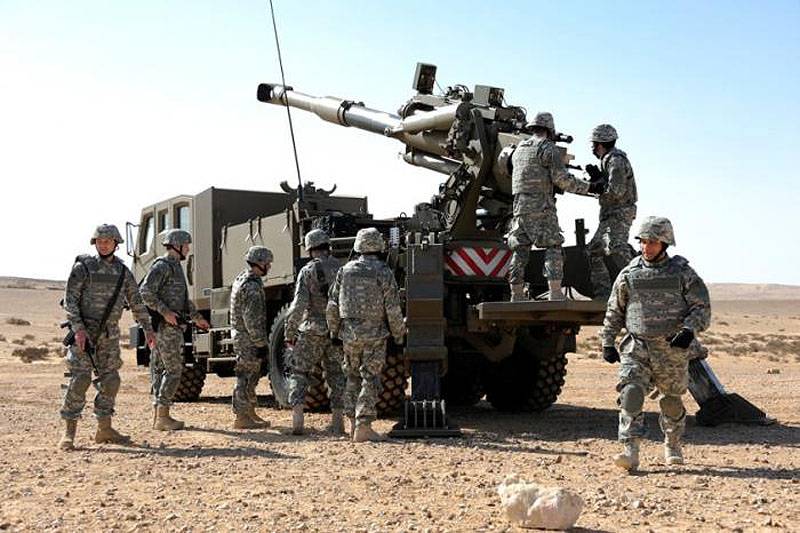
ATMOS 155-mm howitzer on truck chassis in action; a calculation of five people ensures full combat readiness of this system
ATMOS, ATHOS - SOLTAM
Soltam (currently part of Elbit Systems Land and C4I), which products are bought by more than 60 countries, has always preferred highly mobile platforms and has been a leader in artillery pieces mounted on truck chassis. The Atmos system (Autonomous Truck-Mоunted Self-propelled) is an 155-mm cannon / howitzer mounted on the chassis of a 6xXNNX or 6x8 truck. The high-end modular system includes a 8 caliber barrel with a 52 km range. The azimuth angles are limited to the ± 41 ° sector, while the maximum vertical guidance angle reaches + 25 °. Energy is provided by an auxiliary power unit that actuates hydraulic and electrical systems, such as ammunition processing systems and automatic loaders. Depending on the customer’s choice, a modular electronics kit may include tactical computers, an inertial navigation system, an initial velocity radar, day and night sights, a digital communication channel and a target designation system. Atmos was considered by the Israeli army on the 70x6 chassis with a five-seater cabin with double reservations, but its purchase is still pending. The Soviet-style system was also rejected - Atmos D-6, armed with the famous 30-mm howitzer D-122.
Elbit Systems Land and C4I's portfolio also includes the Athos 155 52 towed howitzer, which has the same characteristics as the Atmos (three shots per 15 seconds, 15 shots per three minutes and 75 shots per 60 minutes when installing an automatic loader) , with the possibility of firing in MRSI mode (simultaneous impact of several projectiles; the angle of inclination of the barrel and all projectiles fired at a certain time interval arrive at the target simultaneously; in this case, up to 4 projectiles). The company also upgraded various systems by installing new guns on existing gun carriages, for example, as in the case of the Soviet M-46 howitzer and the American M-114 howitzer.
Elbit Systems offers a Cardom 81 or 120 mm self-propelled sliding mortar
CARDOM - SOLTAM
In addition to 60-mm, 81-mm and 120-mm mortars, Elbit Systems Land and C4I offers two autonomous systems. Cardom recoil mortar Cardom caliber 81 or 120 mm, both models are smooth-bore with a range of 7000 meters and maximum rate of fire 16 shots per minute. The Cardom complex includes a fire control system and a navigation system that allows you to open fire for 30 seconds after the vehicle is stopped. In the Spear 120-mm mortar complex, which is a further development of Cardom, the recoil forces during firing were reduced to less than 10 tons, which allows it to be installed on light vehicles, such as the Humvee armored car. Thanks to a computerized navigation and guidance system, the mortar can start firing and withdraw from the position within one minute. Also, when installed on a base plate, it can shoot from the ground, the calculation is 2-3 of a person, the circular permissible deviation (CVT) of 30 meters, and the rate of fire of 15 shots per minute.
Missiles - IMI
Rocket artillery is an IMI business, and its LAR-160 (Light Artillery Rocket) rocket launcher is available with various types of ammunition. Each of the two transport and launch containers contains 13 160 mm ground-to-ground missiles, the basic uncontrolled version of which has an 45 km range. The launcher can also receive a rocket with GPS-guided Accular, which has a range of 14 to 40 km and KVO 10 meters. The Accular launch canister holds 11 missiles, each with a 35 kg warhead.
Both types of missiles can also be launched from the Lynx modular launcher. The installation has two launch containers that can launch any missile, starting with the 122 caliber mm; when firing 122 mm Grad rockets, each container can hold 20 such rockets. It is completely autonomous and is distinguished by a modern automated control system; quick response time is ensured thanks to the fire control system and inertial navigation system. The hydromechanical system guarantees a reloading time of less than 10 minutes, while the on-board electronics automatically identify the type of ammunition. IMI also offers other Lynx launcher ammunition. One of them is Extra (Extended Range Artillery Rocket) with a diameter of 306 mm with warheads 120 kg, equipped with inertial / GPS guidance, which allows you to get the QNOXNOX meters at a range of 10-20 km. Each Lynx can hold up to four Extra missiles; These rockets are quite popular, they are in service with many armies around the world. A larger system that can be launched by a Lynx launcher is Delilah GL. This is a variant of a ground launch of an air-to-ground rocket, to which a rocket booster is added to launch from the ground. Its warhead weighing 150 kg has a range of 250 km, while the average speed is 180 - 0,3 Mach numbers, reaching the maximum 0,7 when diving on the final part of the trajectory. The rocket fuselage is 0,85 cm in diameter, and its wingspan is 330 meters, which, in combination with a turbojet engine, allows it to patrol over the battlefield and then hit targets with its warhead 1,15 kg. With the help of its homing head (CCD) of the CCD (day) or FLIR (infrared) type, which transmits real-time images to the operator via a data transmission channel, the Delilah GL rocket has the ability to re-attack a fixed or moving target, as well as to assess combat damage. Delilah rocket navigation is provided by inertial / GPS system; Lynx can take one such rocket.
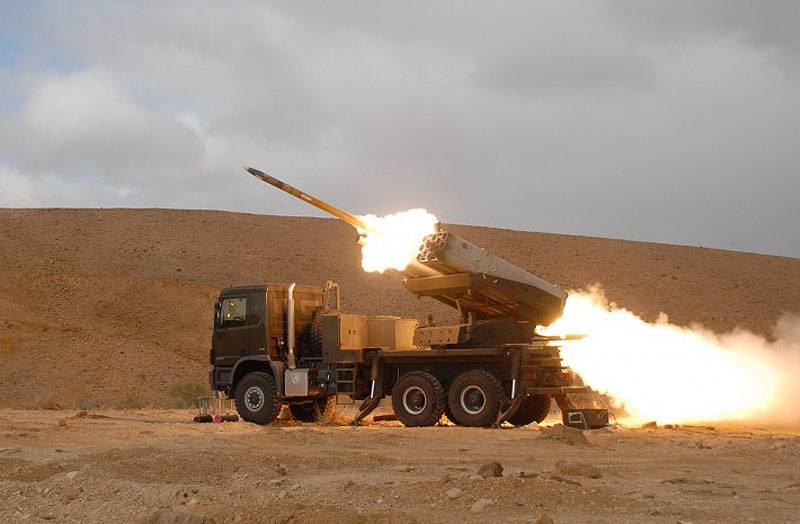
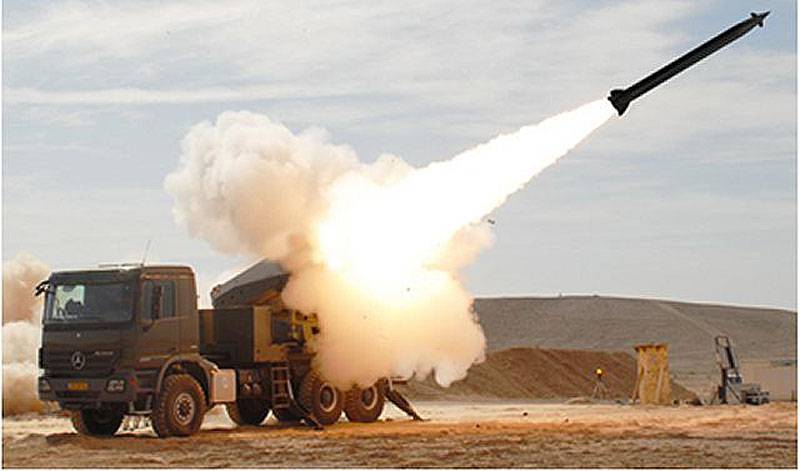
The Accular rocket, aimed by GPS (above), has a QUO of approximately 10 meters and a maximum range of 40 km. Extended Range Artillery Rocket (Extra) missile with extended range from Israel Military Industries has inertial / GPS guidance system and 250 km range
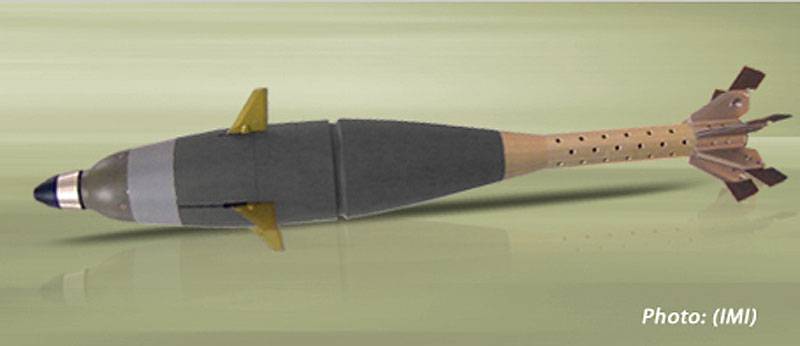
Israel Military Industries has developed a GMM120 mortar shot, equipped with a GPS system and / or a laser semi-active homing system.
Ammo - IMI
The largest division at IMI is the Weapons Division, with 1200 employees, of which 140 are dedicated to research and development. Three out of five centers, artillery ammunition, tank ammunition and anti-personnel ammunition are directly related to ground warfare, while the remaining two deal with aerial munitions and national security systems.
The new 155-mm artillery projectile M454 S-HE (Super-High Explosive) is based on a prefragmented high-explosive fragmentation warhead deployed with a parachute. Before the shot, the fuse is set, after a set time, it is initiated and throws out the warhead, which begins its descent by parachute in the direction of the target, detonating at the optimum height above the target. The prefragmented warhead provides five times more lethality compared with standard high-explosive fragmentation shells when used in manpower, light vehicles and material objects. Thanks to the built-in self-destruction system, there are no unexploded shells; therefore, this munition is compatible with the Convention on the Prohibition of Cluster Munitions. The qualification of an M454 S-HE projectile compatible with all NATO-standard cannons from 39 to 52 calibers was planned for the 2014 year, but IMI has not yet provided any information about this.
IMI planned to complete the qualification of its M454 S-HE projectile in 2014. This projectile is compatible with the Convention on the Prohibition of Cluster Munitions. The prefragmented warhead of the M454 S-HE projectile, parachuted and detonating at the optimum height, and five times lethal to standard high-explosive fragmentation projectiles in case of work on unarmored targets. Self-destruction system allows not to leave unexploded ordnance
IMI also produces a M481 HE-ER (High Explosive-Extended Range, high-explosive, long-range) projectile with a notch at the bottom, which allows them to fire at a distance of up to 30 km. The ammunition is loaded with almost 12 kg of TNT, which is almost 50% more than standard 155 mm ammunition. The IMI catalog also contains other 155 mm, 105 mm caliber shells and Soviet-standard calibers. As for the propelling charges, the company produces a bimodular charge of the NATO standard and a single-module charge; both provide an initial speed of 940 m / s with four modules and a 52 caliber barrel and 750 m / s with three modules and a 39 caliber barrel.
In the field of tank ammunition, IMI is known as one of the major players in the world; She is currently working on a third-generation kinetic projectile. If the M322 2 generation, currently in service (qualified by the Israeli army, as well as Germany and Sweden), allows to shoot more than 1000 shells before replacement, then the new M338 armor-piercing ammunition promises a further breakthrough in this direction. It is filled with an insensitive propellant, which not only increases safety, but also provides additional energy. The M338 core, made of a new tungsten alloy, is heavier than the core of the current M322 projectile. Although there is no accurate data regarding the mass, the ratio of the length to the diameter of the core and the initial velocity, IMI states that the new M338 projectile will have better armor penetration, especially with regard to dynamic protection and spaced armor. The new projectile will need new firing tables for tank fire control systems, although it remains fully compatible with 120-mm smooth-bore guns. The company has completed the development of the projectile and intends to continue to hold his qualification for the Israeli army.
By focusing on urban combat (a daily and routine scenario for the Israeli army), IMI developed one of the latest additions to its line of tank ammunition. The M339 HE-MP-T universal high-explosive fragmentation projectile is distinguished by a three-mode fuse, which makes it effective in the destruction of underground fortifications, urban buildings, light armored vehicles and manpower. The programmable fuse is set to the following modes: fast dot detonation, spot detonation with delay and air detonation. M339 can punch 200 mm reinforced concrete wall with double reinforcement; the mode of delayed detonation allows you to detonate the projectile inside buildings, this not only creates debris, but also creates a significant excess pressure. The programming of the nasal electronic fuse is carried out by an excitation winding connected to the SLA, which gives it an initiation time; This allows the use of a projectile without modifying the breech. The shell is already in production, and the first M339 ammunition was delivered to the Israeli army at the end of 2012. IMI is ready to meet the requirements of some customers who wish to have a projectile with a programmable bottom fuse in order to install it during loading or with the breech closed.
Another notable product in the company's portfolio is the M329 APAM-MP-T universal ammunition (for defeating manpower and material objects), which was originally designed with 105 mm caliber. Its fuse can be installed in five different modes, the most interesting of which is the so-called shooting mode, when the projectile throws six unitary combat units one after the other, thus causing massive fire at a given zone, for example, along the street. The fuse can be set to an instantaneous detonation mode, a delayed point detonation, an air detonation — the entire projectile detonates as a unitary warhead, and into an anti-helicopter mode. Ammunition M329 is in service with the Israeli army.
IMI also manufactures a full line of 100, 105, and 125 mm ammunition. All these products are also engaged in the division of means of destruction, and another division of small calibers is engaged in ammunition for small weapons 5,56, 7,62, 9, 12,7 mm and .338 Lapua Magnum calibers. IMI is the main supplier of ammunition to the Israeli armed forces and has numerous foreign customers, including NATO countries. The 5,56 and 9 mm ammunition ammunition is NATO qualified and available in a “green” version.
Elbit Systems, a company closely involved in mortar ammunition, also produces 60, 81 and 120 mm caliber shells and is developing a new 120-mm round. IMI has also developed the GMM 120 guided mortar mine, which can be equipped with a single or dual-mode guidance system: GPS and / or semi-active laser homing. This provides a circular probable deviation of less than 10 meters at a distance above 9 km; The mine has a control and monitoring mechanism for the front tail.
Towers
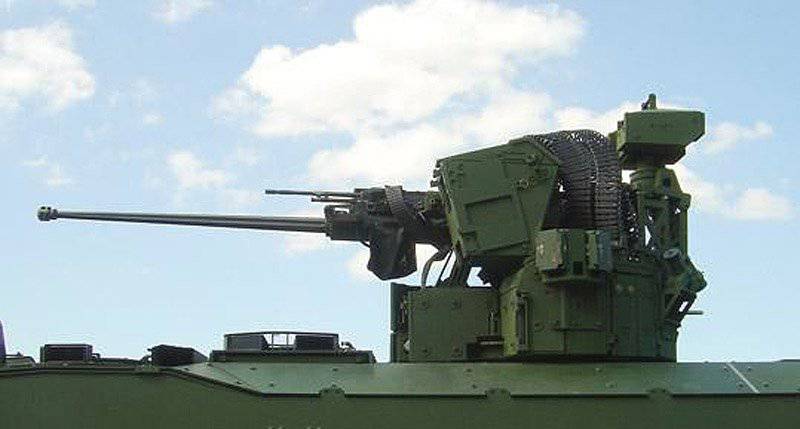
UT30 combat module from Elbit Systems. One of the last contracts was signed with Brazil, where this module is installed on a part of Iveco VBTP-MR Guarani 6x6 machines.
The protection of vehicle gunners is a requirement in Israel, whose troops are confronted with opponents most often in urban-type scenarios. Thus, the three main national defense companies have in their portfolios a variety of remote-controlled combat modules and uninhabited towers armed with small and medium-caliber weapons.
ELBIT
Elbit Systems has recently achieved great success in the field of medium-caliber weapons systems. In its 30 mm UT combat module (Unmanned Turret - Uninhabited Tower), a contract was signed with four countries: Brazil installed them on their Iveco VBTP-MR Guarani, Belgium machines for Mowag Piranha IIIC 8XXNNXX, Portugal for Steyr Pandur II vehicles and Marine Corps, Finally, Slovenia on Patria AMV 8x8 machines, where two Spike ATGMs are also installed in this combat module. The module stabilized on two axes allows to fire in motion; it has separate sights of the gunner-gunner and the commander, both are stabilized along two axes. The design of the module allows the customer to choose from a variety of sighting systems, without thinking about the problems associated with the installation. The maximum pointing angle of the main gun is + 8 °, which is very important in urban combat conditions. Modular protection may increase to the 60 STANAG Level, this applies to ammunition, sights and electronics. In order to maintain export potential, Elbit Systems is ready to transfer its know-how to third parties, as in the case of contracts with Belgium and Brazil.
The company also offers a family of remotely controlled combat modules (DBMS). A very popular system for one type of weapon, which can take machine guns up to 12,7 mm or 40-mm automatic grenade launcher (AH). The module, known as the 12.7 RCWS, is stabilized in two planes; its sensory package consists of a day camera, a thermal sight, a laser rangefinder and a searchlight. OUBM can operate in automatic tracking mode, as well as in manual mode in case of power failure. The module drives provide additional corrections of the aiming angle to the elevation angle of the target when the maximum range of the weapon is exceeded. The 7.62 RCWS is the “younger brother” in the family, but it is also fully stabilized. With a machine gun and 690 cartridges, its weight is less than 150 kg, however, the magazine capacity can be increased to 1150 cartridges at will. The DRWS (Dual Remote Weapon Station) module can accept two weapons systems: the 12,7 mm machine gun or the 40 AG and the optional 7,62 mm machine gun. The module is qualified and manufactured for the Austrian army. With sensors and characteristics, it is similar to the 12.7 RCWS module. DRWS can be used in surveillance mode, when the weapon and sensor set are disconnected and the firing lock is activated; This option is useful when conducting peacekeeping operations. Elbit considers its portfolio of DBMS and uninhabited towers fully equipped, but does not forget to develop new models.
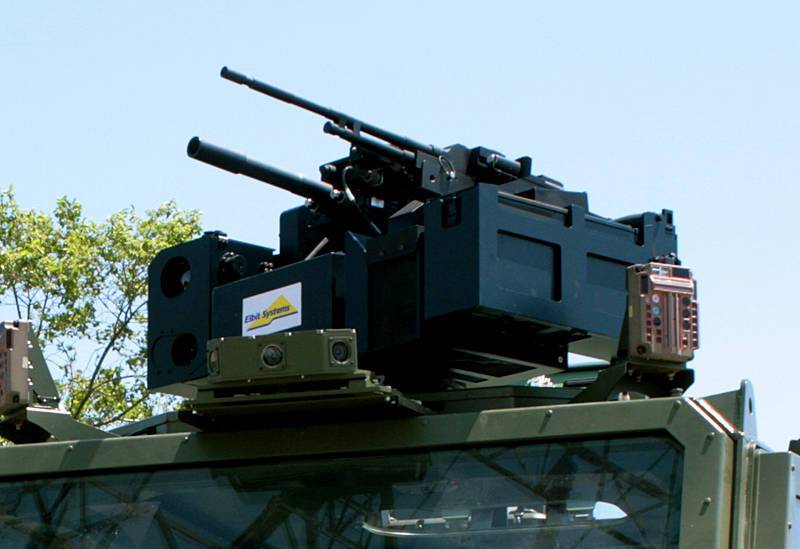
The Elbit Dual Remote Weapon Station can accept an 12,7-mm machine gun or an 40-mm AG in the main cradle and an 7,62-mm machine gun in the extra cradle
Dubs Samson Mini
RAFAEL
The company Rafael is another major player in the field of towers and OCDM, its modules of the Samson family can accept small and medium caliber weapons. At the same time, the company seeks to maximally unify the interfaces of all of its light OCDMs. The lightest member of the family, the Samson Junior module, can accept light machine guns of caliber 5,56 mm or 7,62 mm. The module was delivered to Israel and to an unnamed European customer. Low weight from 60 to 75 kg without weapons and ammunition allows you to install it even on small cars. If the mass is not so critical, then it is possible to install a Samsun Mini DUBM with a weight of about 150 kg. He can accept machine guns of caliber up to 12,7 mm and AH to 40 mm. When visiting the Rafael assembly line in the city of Haifa, you can see the production of modules without stabilization and protection for an unnamed foreign customer (see photo below). 207 of such modules were manufactured and installed on Israeli heavy Namer BMPs. These modules are stabilized and can take 7,62-mm and 12,7-mm machine gun or 40-mm AG, have one cradle and therefore the armament can be quickly replaced by the crew. Protecting the drives, front cradle and sighting system adds 50 kg to the original weight. The Dubson Samson Mini was sold in thousands to the Israeli army and in 13 foreign countries. The company Rafael also satisfied the request of the customer who wanted to install 14,5-mm machine gun KPVT (large-caliber machine gun Vladimirov tank). This required the development of a new design due to the greater length and weight of the weapon and large recoil forces, as well as somewhat changing the position of the drives.
With a mass without weapons and ammunition of all 260 kg, the Samson Dual module can accept a medium-caliber gun and an additional weapon of a caliber up to 12,7 mm. The Dual module, based on a completely new design, allows reloading from inside the machine; It can easily be installed on light armored vehicles of 4x4 configuration. One of the weapons systems can be removed and replaced with a dual ATGM installation.
The uninhabited Samson MkI tower, which sold about 100 units to the Czech Republic, evolved into two MkII prototypes, where the possibility of reloading from the inside of the machine was realized. The new system can accept two Spike anti-tank guided missiles, which, if they are not needed, are put into a protected niche. The launch can accept the MR, LR and ER variants of this guided missile also produced by Rafael. After extensive testing conducted in June 2013, the module received a go-ahead for mass production. In December, 2015 of the year Lithuania signed a contract for the supply of 88 Boxer armored vehicles with uninhabited Samson MkII towers installed on them.
Samsom Mini module on the Rafael assembly line in Haifa. He was chosen by Israel for installation on the Namer BMP and several foreign customers. Being one of the most popular systems of the Rafael company in the field of combat modules, the Samson Mini can be armed with various weapon systems, up to 12,7 mm machine guns or 40 mm automatic grenade launchers
The Spike NLOS guided missile can hit targets at a range of 25 km. Can be installed on small vessels
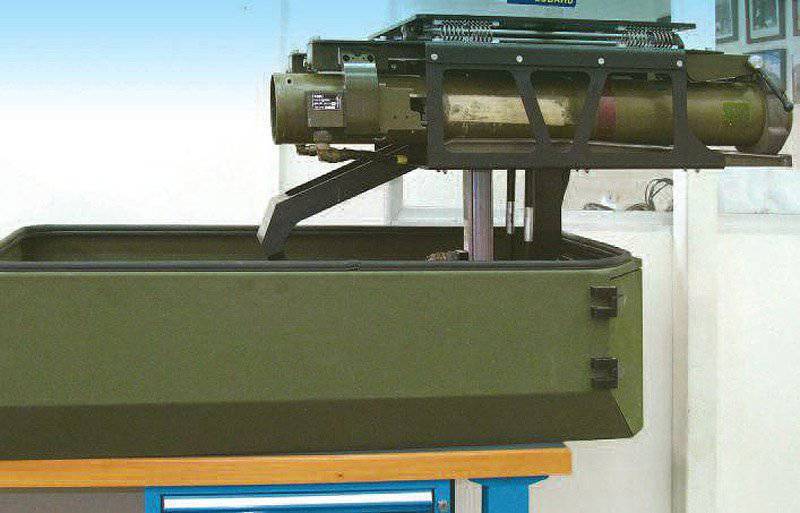
A new launch container with two Spike anti-tank guided missiles can be retracted inside the module. It is designed for the uninhabited Samson MkI and MkII towers.
IMI
Israel Military Industries is not only closely engaged in the modernization of towers with medium and large caliber armament, but is also present in the light DUBM business. Her portfolio currently includes a line of fully stabilized Wave modules. DUBM Wave 100 can accept 7,62 mm or 12,7 mm machine guns; the module without weapons and ammunition weighs 160 kg. With a mass of 170 kg, the next variant of the Wave 200 allows the customer to install a 40 mm H&K AG, the vertical angles remain the same –20 ° / + 60 °, as well as a sensor set consisting of a daytime camera with continuous magnification, a thermal imager and a laser rangefinder. While maintaining similar characteristics, the Wave 300 module has significant design differences, since it was developed for the weapons of the Warsaw Pact countries, for example, the 7,62-mm PKT machine gun and the 12,7-mm NSVT machine gun.
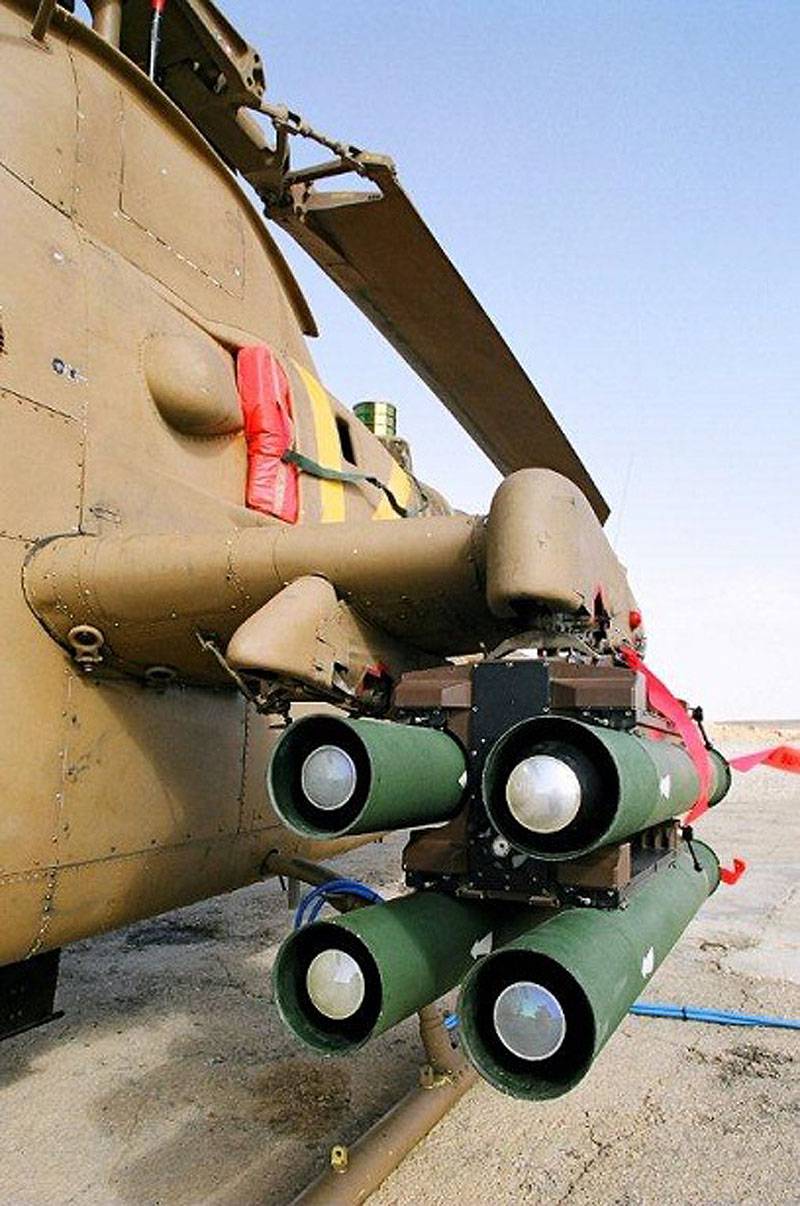
Rafael Spike ER rockets on Cobra attack helicopter. These rockets are also mounted on Tiger helicopters from Eurocopter and A129 Mangusta from AgustaWestland
Anti-tank and anti-material missiles
The Spike family of guided missiles, developed by Rafael, covers an extremely wide range of combat missions, ranging from medium caliber artillery to melee in urban areas. Using its experience in optoelectronics, a company from the Israeli city of Haifa is developing high-precision systems for infantry; some of them are used not only on the ground, but are also installed on combat helicopters and sea vessels.
Let's start with the maximum range. The champion here is the Spike NLOS guided missile, which has a wireless data channel, which implies the presence of an operator and a day / night seeker. Thus, a rocket can hit targets in indirect visibility and switch from one target to another until the very last minute. The cruciform missile has a real range of 25 km, weighs 71 kg in its launch canister and can be equipped with different types of warheads, cumulative, fragmentation, armor-piercing and fragmentation. The rocket can be launched from machines, helicopters or light vessels.
The next member of the family with a range of 8 km, used not only in ground-based tasks, is designated Spike ER (Extended Range). The connection between the operator and the rocket is carried out via fiber optic wire, which allows it to be launched in the target lock mode after the launch of the missile or in the more usual target lock mode before the launch, but with the possibility of trajectory correction. However, the GOS also allows you to start in the mode of autonomous guidance. A typical carrier of a missile in the ER version are attack helicopters. So Spain and Italy have chosen it for their Tiger and Mangusta helicopters, respectively, although it can be used for other tasks, for example, when mounted on a tripod for the defense of the coastline. The long (LR, Long Range) and medium (MR, Medium Range) range options are mainly in service with infantry. Spike LR and Spike MR guided missiles can be launched from closed spaces, but differ, of course, in their range, 4 km and 2,5 km, respectively. The LR variant can be launched in the autonomous guidance mode with the introduction of a correction, while the MR variant is a fully self-guided missile with a GOS consisting of day and thermal imaging cameras. A two-man crew can deploy one launcher and two missiles. The MR, LR and ER variants are also manufactured by Eurospike, a joint venture between Rafael, Diehl BGT Defense and Rheinmetall Defense Electronics.
Two more members of the Spike family, Spike-SR (short range) and Mini-Spike, are being developed. The Mini-Spike missile with an armor-piercing-fragmentation warhead is equipped with a radio channel of communication with the launcher, which makes it possible to update data after launching with the aid of an optical-electronic seeker. The range of the 4,5 rocket with a mass of kg is up to 1500 meters, it is able to carry out an attack at high angles. In addition to its standard light launcher, it can be launched from the launchers of missiles MR and LR. Series production of the Mini-Spike rocket could begin in the 2017 year. The Spike-SR version of the “shot-forgotten” type with the infrared GOS is a single-use PU system, has a mass of 9 kg and a radius of one kilometer. The original combat unit is designed to destroy tanks, but in the future, other types of combat units may become available. The production of the Spike-SR variant should start in the 2016 year.
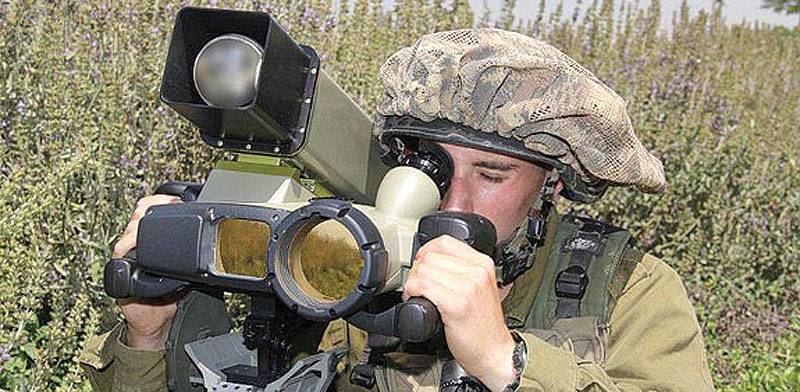
Launch Mini Spike has a radio channel with a launcher. It can be launched either from a standard launcher or from standard Spike launchers.
Shipon's grenade launcher developed by Israel Military Industries is based on the concept of over-the-barrel grenades
Street fighting
If the range and targets do not require the use of a guided missile, then unguided missiles and warheads come into play. The company Rafael acquired the German company Dynabit Nobel Defense and now the research departments of both companies are developing several products, many of which are designed for urban combat. In Germany, the 90-mm grenade launcher is known under the designation RGW-90, and in Israel as the Matador; to it there are combat units of several types. There are grenades in the Rafael company catalog for demolishing buildings and for making passages in walls. All Matador systems are one meter long and are based on the recoilless Davis principle (with inertial mass), which allows you to shoot from a closed space.
Matador-AS weighing 10 kg has a range of 400 meters. Its tandem warhead is equipped with a multi-mode fuse, which allows you to destroy fortified positions, wooden dugouts, urban buildings and light armored vehicles. A heavier Matador-WB grenade launcher with a 13 mass of kg and a range of 120 meters has an over-caliber warhead of “shock core” diameter greater than the diameter of the launch tube. It is designed specifically for making passages in the walls, into which infantry can then penetrate. The tube has a simple folding non-optical sight. Also available option Matador-MP with a universal warhead.
Urban structures, fortified positions and light armored vehicles are the targets of a Rafael Matador AS grenade launcher (pictured below is a Simon rifle grenade)
Israel Military Industries has developed the Shipon grenade launcher also based on the recoilless principle of Davis, which allows firing from the premises. Its universal ammunition can be used in the mode of prohibitive action, in the mode of air blasting, in the usual mode. A grenade launcher can cope with reinforced concrete walls or walls of three bricks. Shipon mass is 6,8 kg and 300 range of meters.
The company Rafael undoubtedly places great emphasis on urban hostilities (the enemies of the Israelis are mainly in the cities) and therefore developed a rifle grenade to destroy the doors of Simon. It is launched from a rifle using a standard 5,56-mm warhead, and is intended for punching holes in steel and wood at a distance of 15-30 meters. The grenade weighs only 680 grams, in a plastic case of which a charge is placed, a distance rod, stabilizing plumage, a safety arming device and a percussion detonator.
IMI has created another system for street fighters. Wall Buster is a remotely activated pyrotechnic passage-breaking tool designed to create gaps in walls. It can be installed using a telescopic rod, magnetic tape or double-sided tape. The device is available in different sizes, it includes an initiating charge, which can be replaced by an IMI Matchbox charge timer, a flexible ignition cord and a detonator.
Simon rifle grenade, developed by Rafael, is designed to open doorways. This is one of the many systems of making passages, the appearance of which was largely contributed to the experience of the Israeli army.
Optoelectronics in the field
The Israeli industrial potential in the field of night vision systems and target designation is enormous, since the national customer needs to dominate the battlefield at night and accurately define targets in complex combat scenarios. Also developed and other areas of optical-electronic systems.
The device from Elbit Long View CR allows you to recognize a person at a distance of 7 km due to an increase in x18
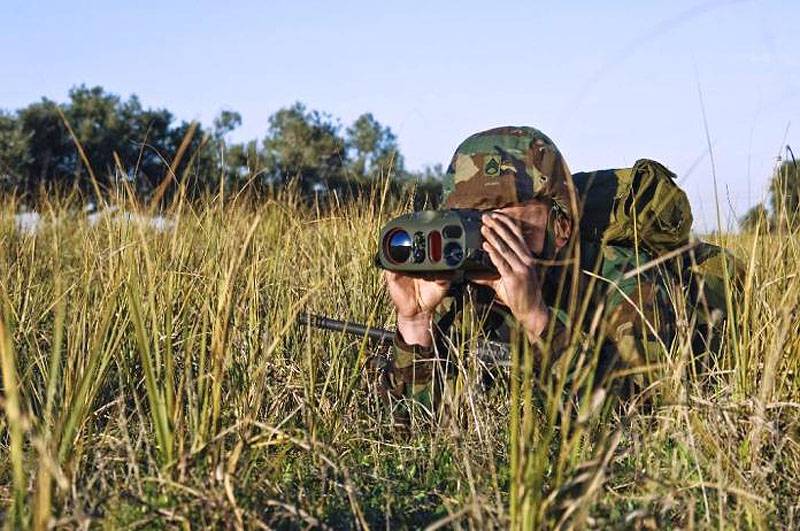
The uncooled Mini-Coral thermal imager, formerly known as Mars, is part of the Coral family and is typically used at the platoon level
Elbit Systems supplies night vision systems for tanks and armored vehicles; its systems are installed on the tanks Merkava, T-72, Leopard and Arjun, as well as on the Namer BMP and BMP-2. They range from sights of commanders and shooters, driver’s instruments, and situational awareness systems. At the tactical level, its family of Coral hand-held binocular thermal imagers can meet the needs of different level units, starting with the department. An uncooled unit weighing 1,7 kg Mini Coral can recognize a person at a distance of 1 km and, as a rule, is applied at the level of a platoon. A larger Coral-Z device with optical and digital zoom doubles that distance. Other systems from the Coral family are also available, they are based on the proven 3-5 micron FPA InSb technology (matrix in the focal plane on indium antimonide). They are in service with 25 countries, including Israel, the United States and several NATO countries. For long distances, a Long View CR device with a thermal imaging channel with continuous x18 magnification, as well as CCD cameras with wide and narrow fields of view, which is able to recognize a person at a distance over 7 km, is well suited.
Targeting systems are another area of the optical-electronic business of Elbit Systems. A wide variety of models are available for various ranges. For close range, we can call the Rattler H and Rattler G devices, which are the optimal solution for units in combat contact and advanced aviation gunners. The pistol-type Rattler H, weighing only 1,3 kg, can detect a NATO standard target at a distance of 3 km, while the Rattler G 1,7 kg device can detect a target at 10 km and recognize it at 5 km. Complete with the Coral CR and the lightweight Atlas tripod with built-in gyrocompass, the Rattler G allows accurate targeting day and night. The PLDR II with built-in GPS, electronic compass and tactical computer weighs 6,7 kg and can detect a target the size of a tank at a distance of 6 km and a larger target at 10 km. The night vision function can be added in the form of a Coral LS device, which is distinguished by a long-range "See-Spot" mode (the ability to observe a laser spot with a thermal imaging camera when the target is illuminated with a laser designator). Two portable long-range systems are available: Serpent with a mass of 4,63 kg with a detection range of a tank of 8 km and a larger target of 11 km and a PLLDS with a mass of 8 kg with recognition ranges of over 10 km. Target designators from Elbit Systems are widely used in Western armies, their ratio of mass to range has always been one of the best.
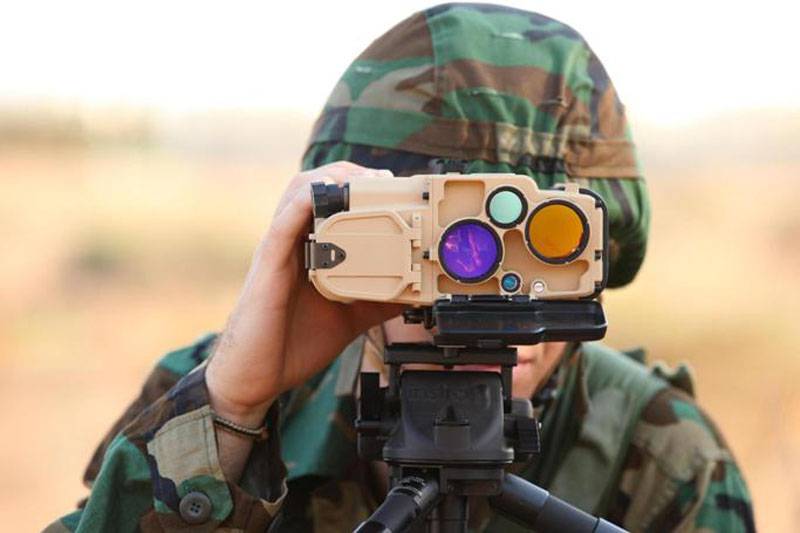
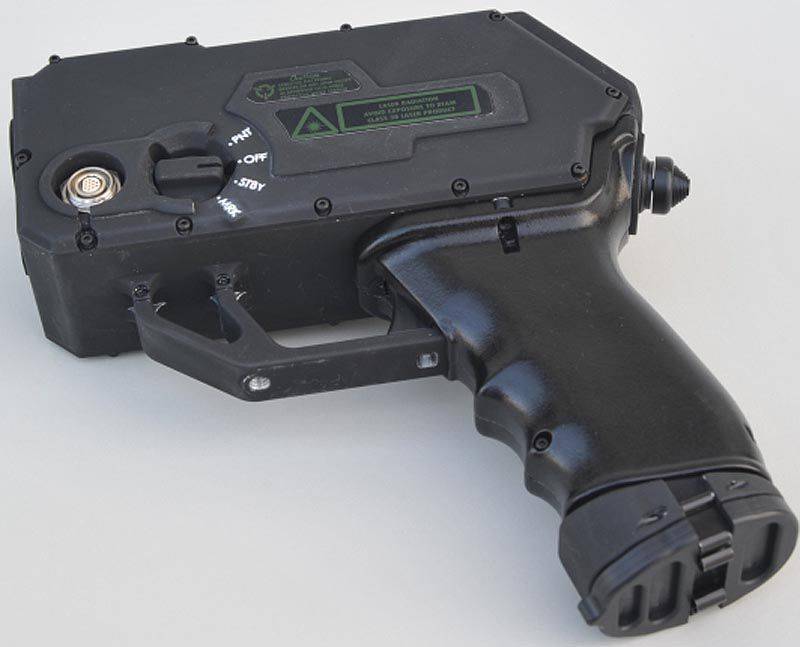
One of the easiest markers / targets on the Rattler-G market (top). Initially, it was intended only for special forces, such as advanced aviation observers, and now it has become more widespread. Very light, easy to use due to its form. Rattler H (below) can indicate a target at a distance of 3 km
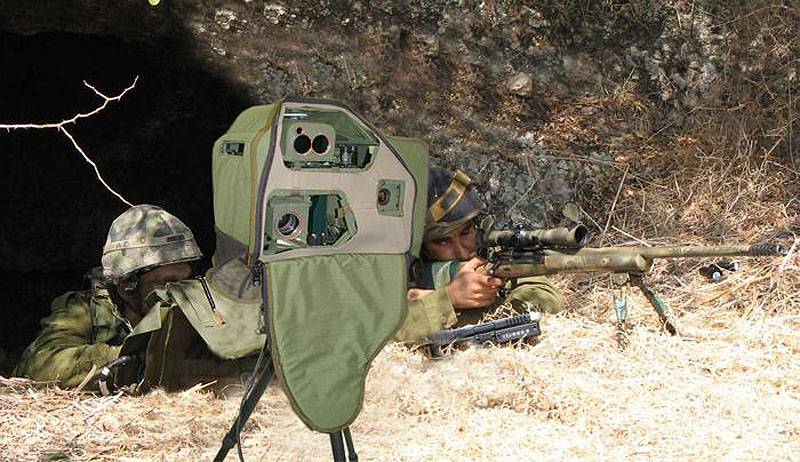
To protect infantry positions, Rafael has developed a tripod version of its SpotLite shot detection system.
In full accordance with the “action and reaction” principle, the activities of Elbit Systems in the optoelectronic area are not only aimed at providing night vision solutions for anti-tank missiles, such as A-TIM, but also to combat these same missiles. VIRCM (Vehicle-Mounted IR Counter Measure - an infrared countermeasure device mounted on vehicles) is capable of jamming anti-tank missiles from infrared homing systems that are deployed on many SACLOS (semi-active command guidance on the line of sight) 2 generation.
Rafael also deals with the protection of vehicles and troops from direct-fire weapons, as evidenced by the SpotLite family of systems that it has developed. The portable opto-electronic system SpotLite P (P - portable) with a field of view 48 ° can detect and locate a shot of a small arms. The system is carried by two soldiers and installed in a stationary position on a tripod. The sensor head includes a CCD, a laser range finder, a laser marker and GPS; after confirming that the enemy is firing, the device marks the target with its laser. Coordinates are provided directly to the performers, it can be snipers, combat vehicles and aircraft. Option SpotLite M (mobile) with a circular coating 360 ° is designed for installation on vehicles and allows you to identify and localize small arms, RPGs, ATGM and tank shells, fired in the direction of the machine, even during its movement. The machine can respond with passive and active measures or pass the location of the source of fire upstream along the command chain.
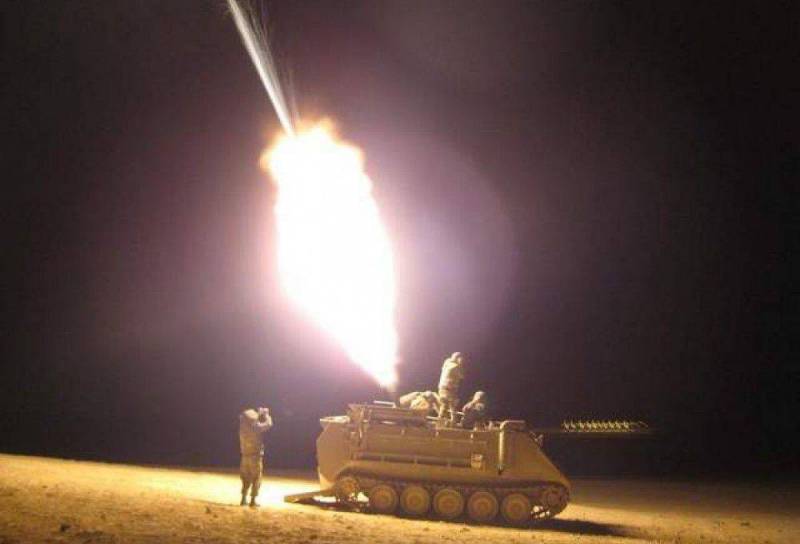

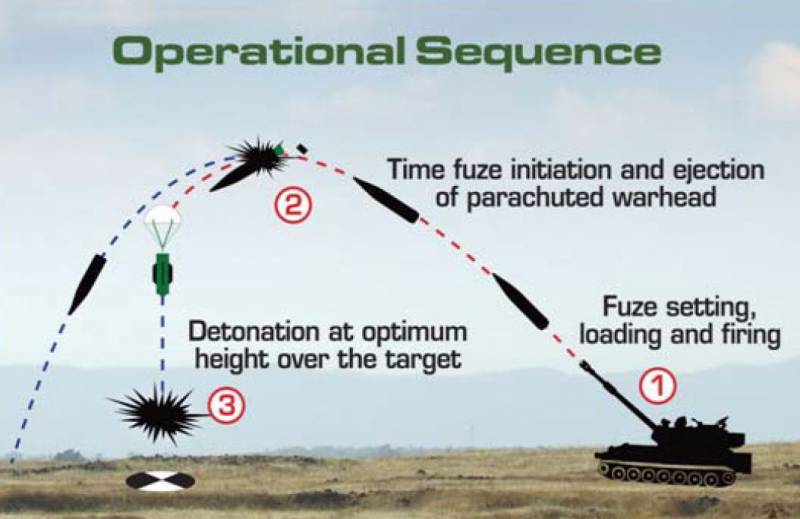

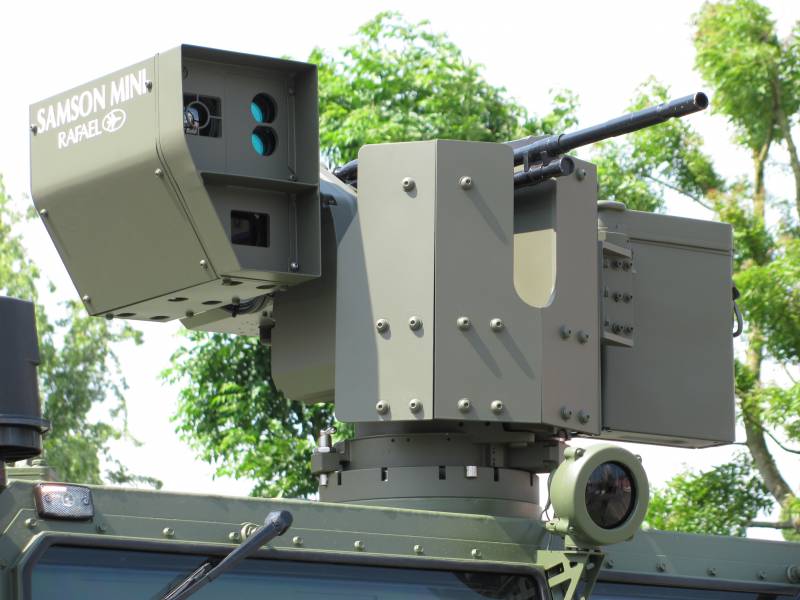
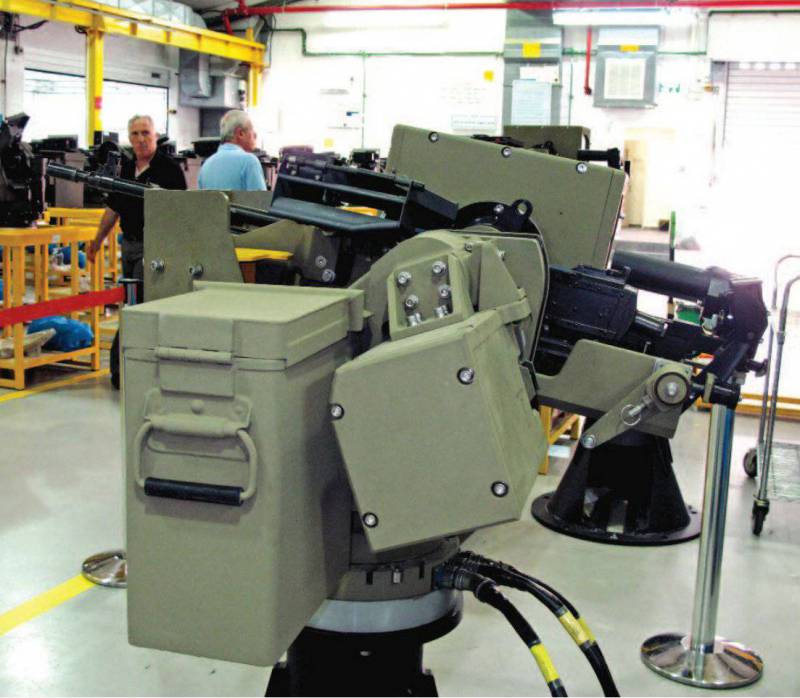

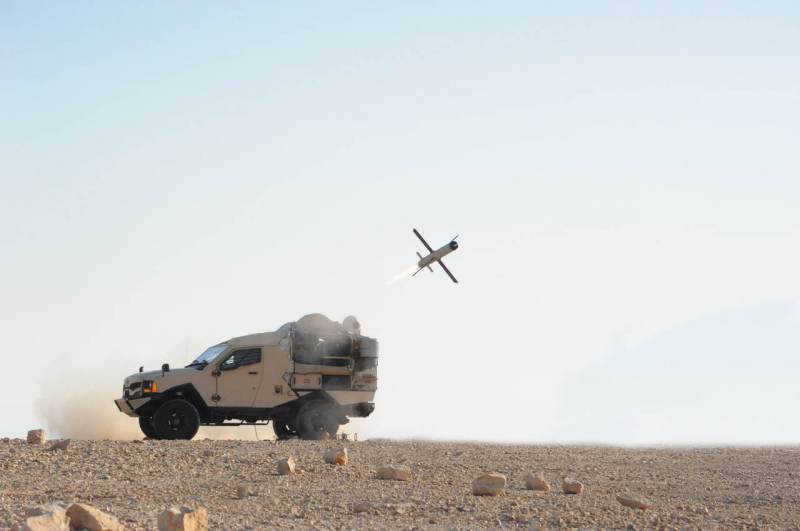
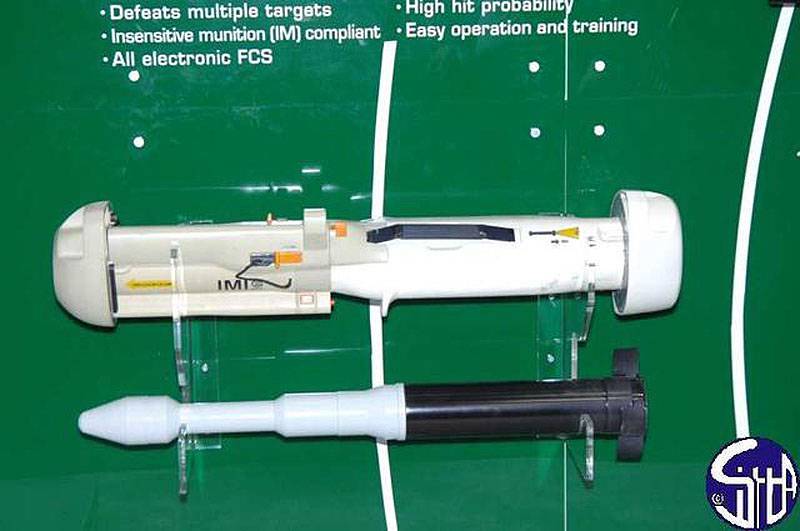
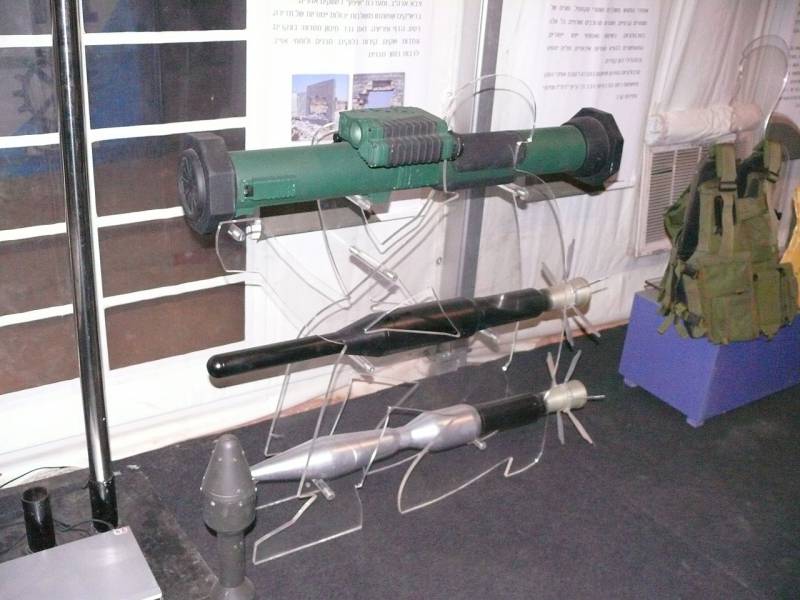
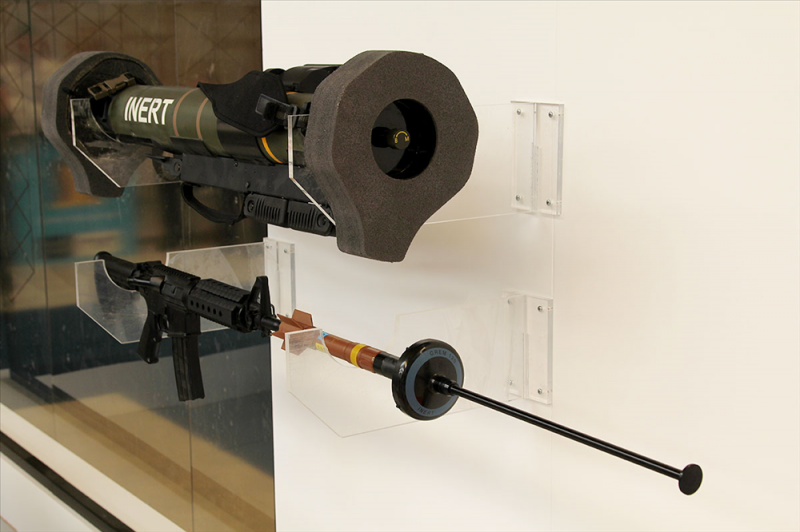
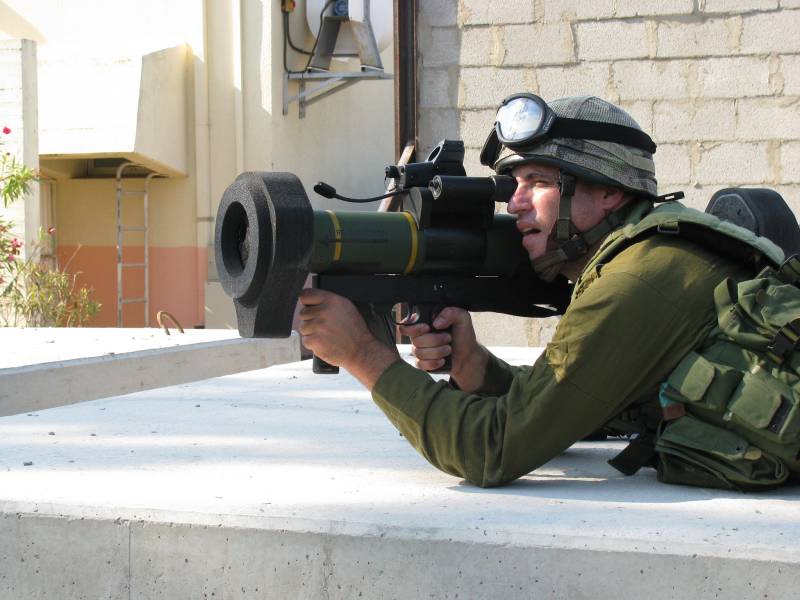
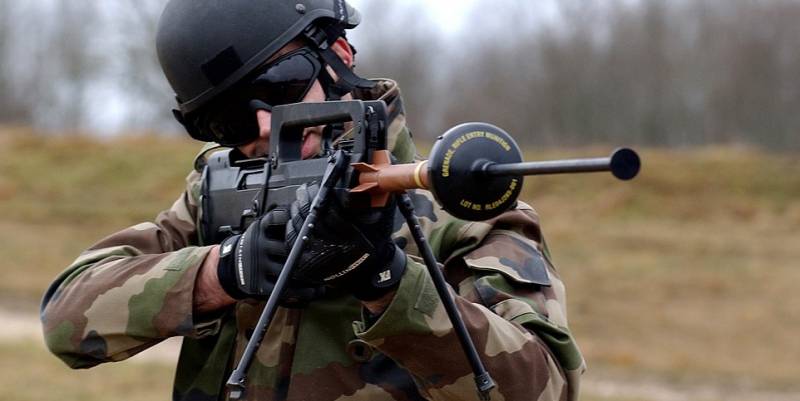
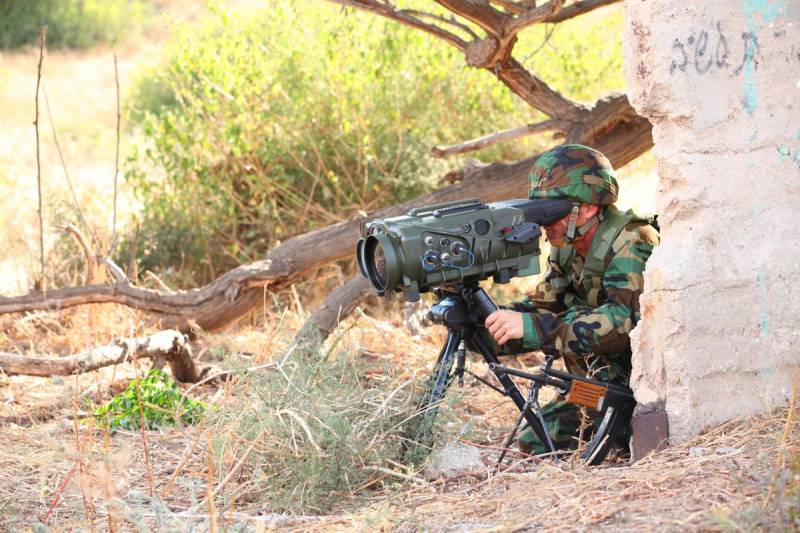
Information